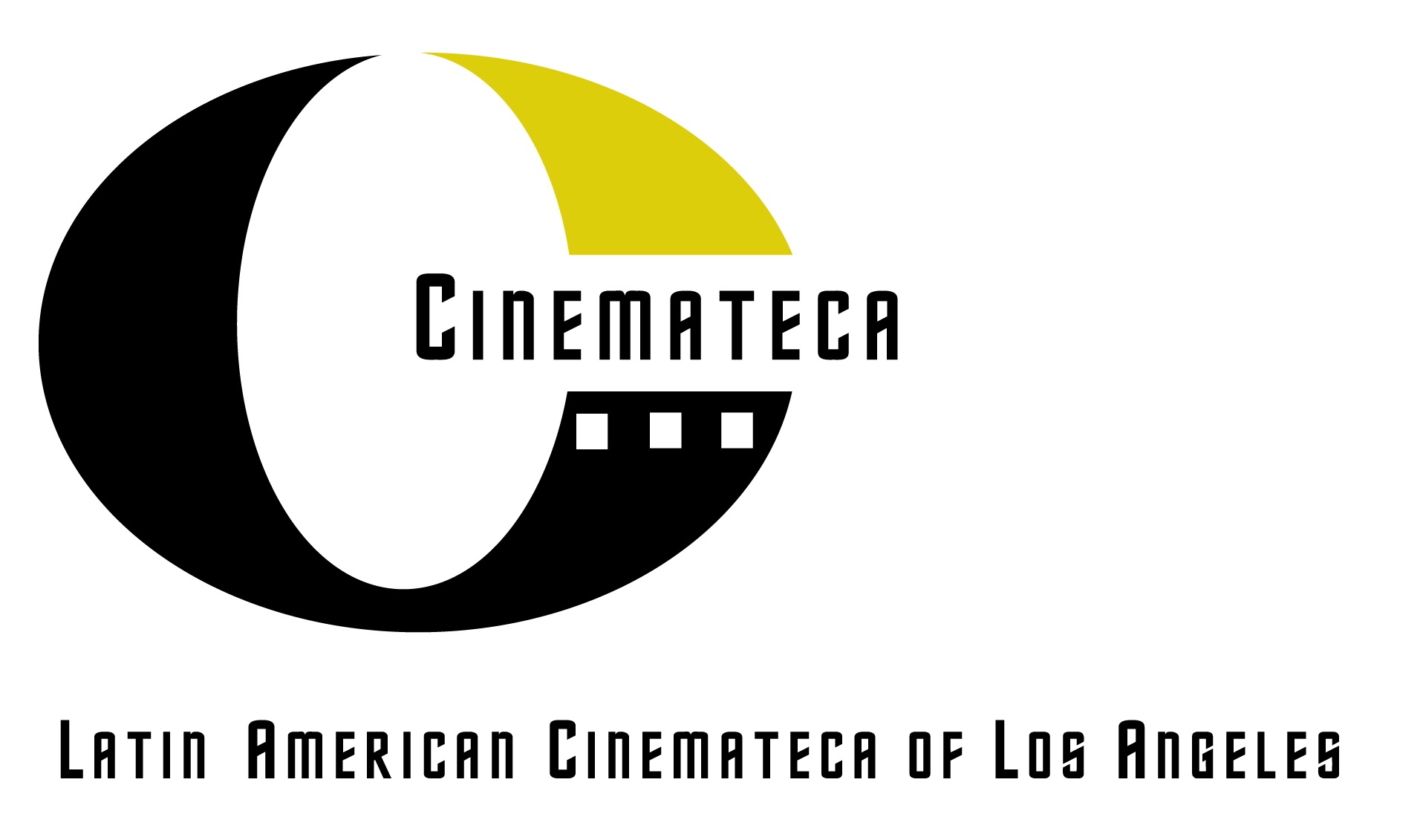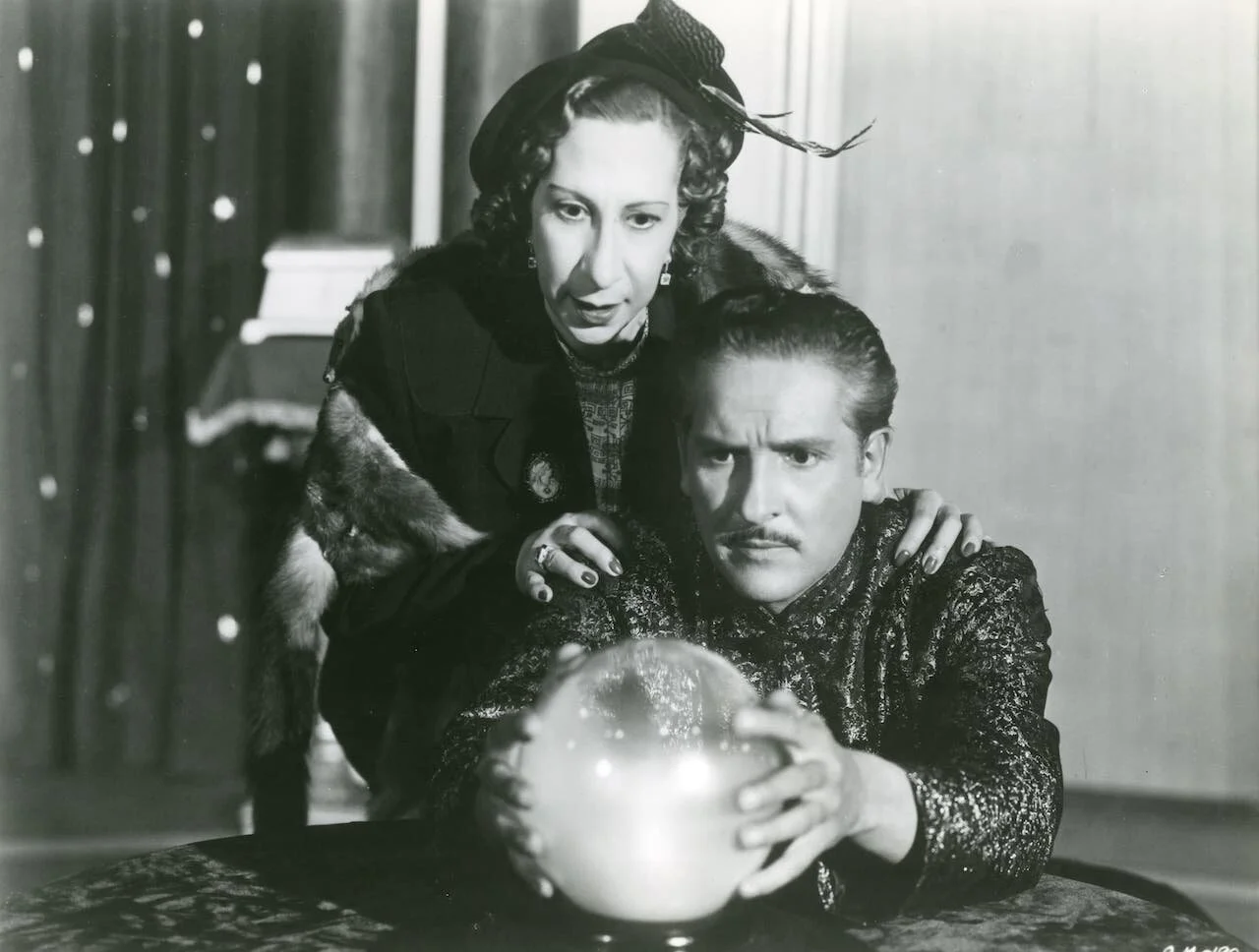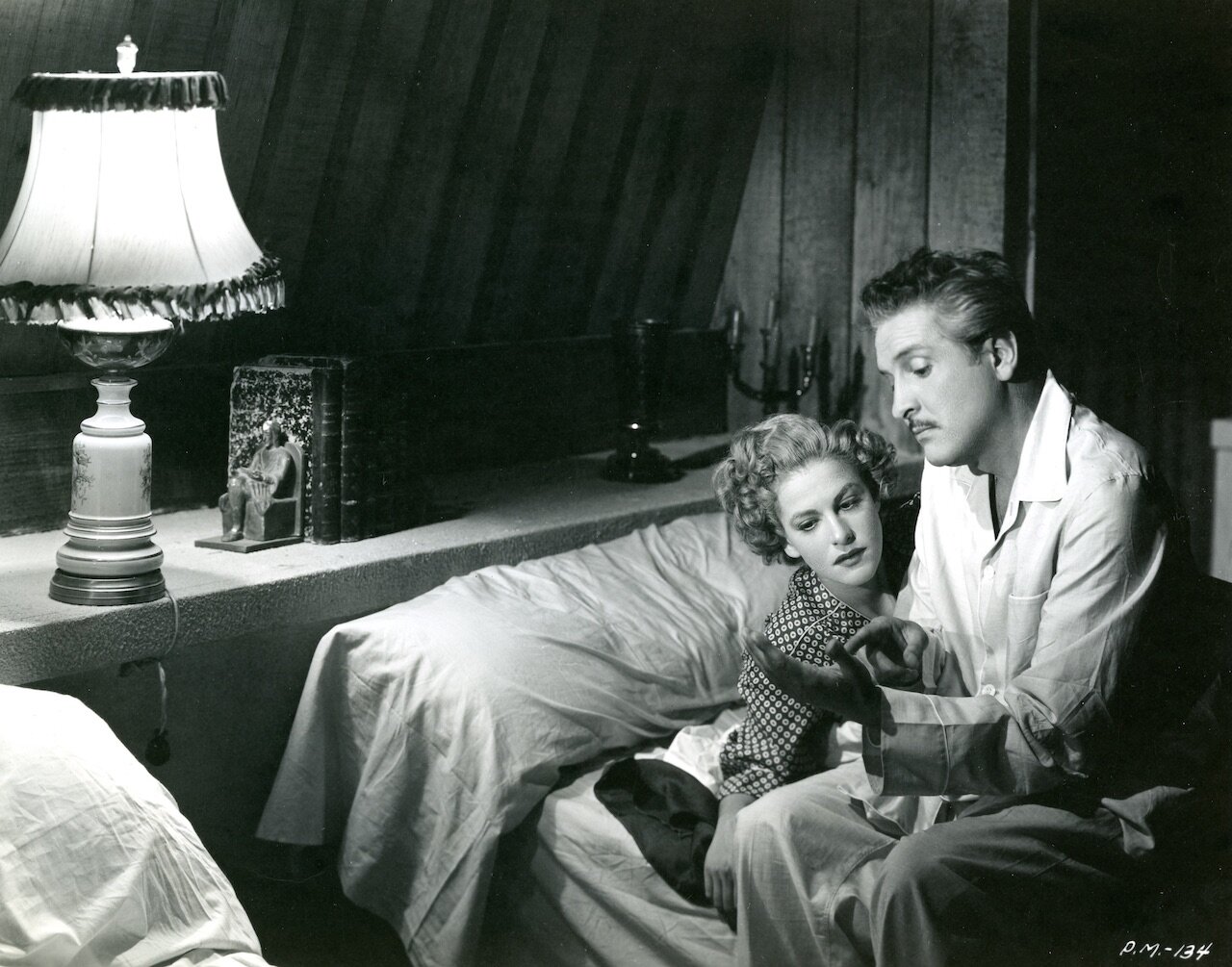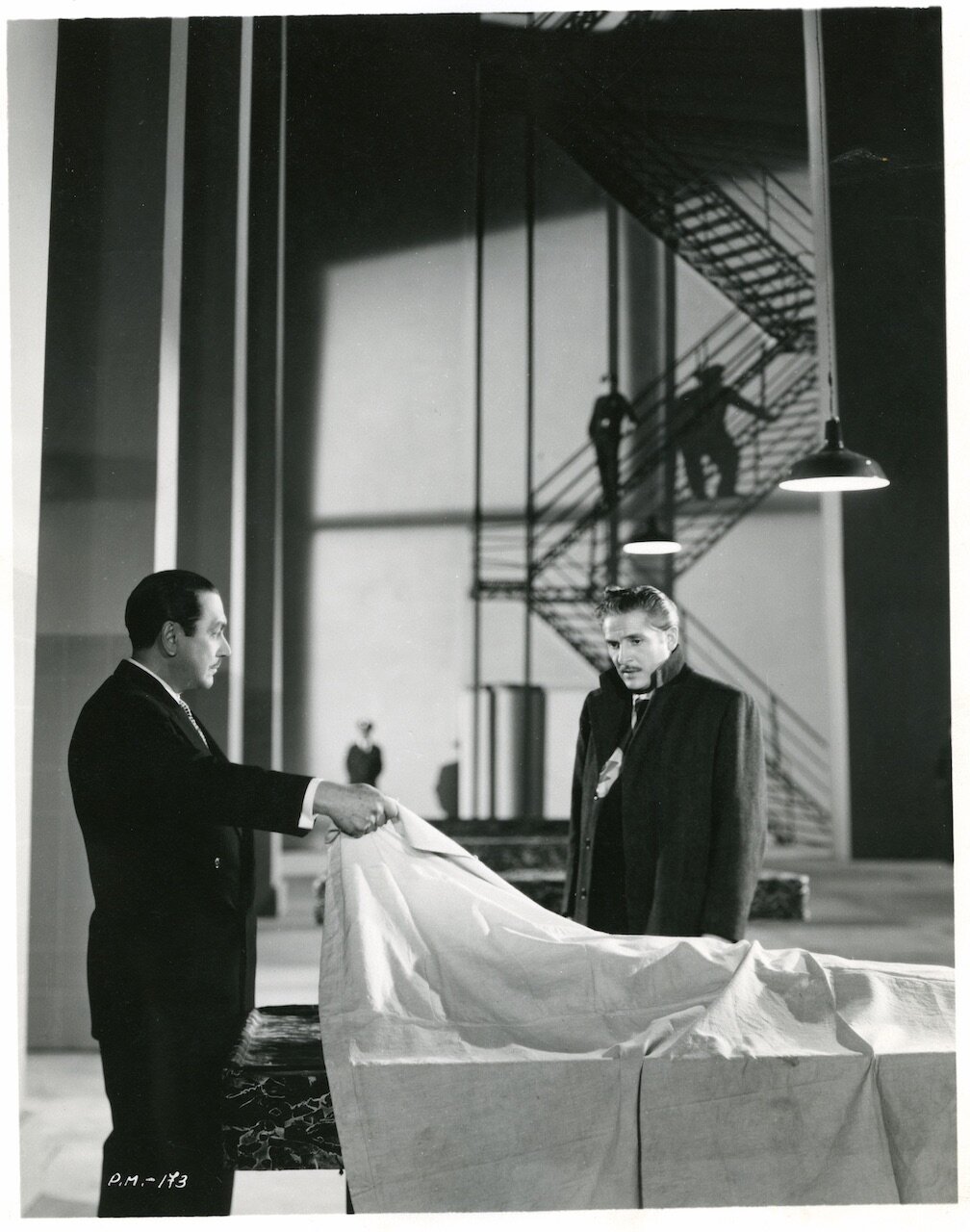Program Notes: EN LA PALMA DE TU MANO
by María Elena de las Carreras, PhD and Fulbright Scholar
“The best among Gavaldón’s films often focus on characters with hidden desires and split personalities that cut them off from society and isolate them within their obsessions”
Will Noah, “Roberto Gavaldón: Mexico’s Auteur of Noir”.
New York Review of Books, April 27, 2019.
This reference to twisted characters, spinning out of control, doomed by external forces or their obsessions would be applicable to a number of dark films today, like Joker, Uncut Gems and Relatos salvajes, that capture the modern urban zeitgeist. So it is not by chance that the melodramas of Roberto Gavaldón, a great stylist of the Mexican Golden Age, have come into sharper focus in the world of English-language aficionados of noir cinema. The versatile Gavaldón has been the focus of a 13-film retrospective at the Museum of Modern Art in early 2019, and his work has been included in comprehensive series of Mexican crime cinema of the 40s and 50s, in New York, Los Angeles, San Francisco and San Sebastián. Luckily for new audiences, his films circulate in that territory of wonder called YouTube, in sometimes excellent versions from Mexican archives, but mostly without subtitles, as J. Hoberman wrote a few months ago in the New York Times (1). The Cineteca Nacional and the Filmoteca de la UNAM, with the support of Televisa, are the key organizations restoring many of the director’s 40-plus films.
It is a temptation to simplify the Mexican Golden Age, spanning the arrival of sound in the early 1930s to the late 1950s - and, with Argentina, one of the two robust film industries of Latin America – as a territory containing two towering directors, Emilio Fernández and Luis Buñuel, a renowned cinematographer, Gabriel Figueroa, two exotic beauties, Dolores del Río and María Félix, two super popular singers, Jorge Negrete and Pedro Infante, and a couple of very funny comedians, Cantinflas and Tin Tan. It is the mea culpa of a veteran film professor teaching surveys of international cinema year after year, to plunge students into the rich well of film history.
Over the years, the programs of the Latin American Cinemateca of Los Angeles have been opening vistas to lands of enchantment, with topnotch screenings of remarkable classic and modern Hispanic films. And the selection of En la palma de tu mano [In the Palm of Your Hand] will be no exception.
Roberto Gavaldón (1909-1986) was a versatile director, working in a variety of genres, in the heyday of the studio system in Mexico, and also directing a couple of English-language pictures, like The Littlest Outlaw, a Disney film of 1955.
The director’s collaboration with left-wing writer, social critic and activist José Revueltas (1914-1976), brother of composer Silvestre and actor Rosaura, brought to the Mexican screen a distinctive way of poking at social dynamics – where class struggles were cleverly coded as sexual and family clashes. These titles also show what putty the Hollywood conventions were in the dexterous hands of clever artists south of the border. La otra (1946), La diosa arrodillada (1947), Rosauro Castro (1950), La noche avanza (1952), and Las tres perfectas casadas (1953) are the fruits of these efforts, whether adaptations or original stories.
En la palma de tu mano, released in 1951, is a prime example of the Gavaldón-Revueltas work, and with the passage of time, it has become a landmark noir film.
A few observations on noir cinema, similar to what I wrote a year ago about the Latin American Cinemateca screening of Los tallos amargos, the Argentine crime film of 1956, directed by Fernando Ayala. The term was coined by French critics to describe the style and content of American crime films made in the forties and fifties. Interestingly, U.S. and European filmmakers like John Huston, Robert Siodmak, Fritz Lang, Max Ophuls, Otto Preminger, Billy Wilder and Orson Welles, among others, working in the Hollywood system, did not describe their work using this term. Seen in perspective, titles like The Maltese Falcon, Phantom Lady, The Woman in the Window, Caught, Laura, Double Indemnity and The Lady from Shanghai reflected a sensibility, a mood, a visual flair, that showcased psychological narratives where the action “however violent or fast-paced was less significant than faces, gestures, words, than the truth of the characters”, as New Yorker critic Richard Brody noted when reviewing two noir retrospectives in 2014. (3) French critics had observed this prevalence of psychological narrative over action and borrowed the term noir – black –from the title of a collection crime fiction to describe these stylish Hollywood black and white dramas of the forties and fifties.
Even if it is problematic to think of noir as a well-defined genre – like westerns, comedies or musicals – since it is primarily a visual style, determined by particular circumstances and heavily rooted in German Expressionism and a pessimistic worldview, the term has gained purchase, albeit as a “peculiar genre”, in Brody’s words. It has become a standard shortcut to group crime titles, in a large or narrow sense, where character studies are the focus of the films. In the case of Mexican cinema, Luis Buñuel’s Él (1953) and Ensayo de un crimen (1955) fit the description, and so do Emilio Fernández’s Salón México (1949) and Víctimas del pecado (1951) (2). En la palma de su mano, their contemporary, shares all these elements with similar Mexican noir flamboyance.
Arturo de Córdova stars as Professor Karin, a fortune teller – echoes of Nighmare Alley (1947) - who blackmails rich women with secrets his devoted lover the manicurist Clara Stein (Carmen Montejo), a haunted refugee from WWII, finds out at her posh salon. Karin meets his match in the cunning widow Ada Romano (Leticia Palma), who has murdered her millionaire husband with the help of his nephew (Ramón Gay), whom she has seduced. In possession of this damming information, Karin thinks and acts as the cat chasing the mouse, but in reality the spiderweb the femme fatale spins around the professor will be his, and tragic Clara’s undoing, with the effete nephew thrown in the mix. The protagonist’s increasing obsessions and untamed desires for what is beyond the social and moral pale – namely sex and money - are a pattern Gavaldón and Revueltas repeated in their other films, with box-office success.
The professor’s recurring line, “your destiny is in the palm on your hand” makes explicit the fatalism pervading the film. It captures somewhat didactically the entanglement of the con man and the widow, both victims and victimizers beyond redemption. The final scene, with Karin descending a steep jagged-angled staircase into the police morgue, where a fatal story twist awaits, uses a giant prop to very effective melodramatic effect. Noir aficionados will love the sharp black and white cinematography of Alex Phillips – the chiaroscuros and canted angles, the dramatically lit fireplaces, streets in penumbra, in sum the works - and the richly apportioned interiors where the protagonist’s implacable journey spirals downward.
En la palma de tu mano is an excellent introduction to the work of Roberto Gavaldón, a major figure of Mexican cinema.
Notes:
(1) J. Hoberman, “The Golden Age of Mexican Cinema Lives Quietly Online”, New York Times, October 22, 2019.
(2) When proposing an evaluation of Latin American crime cinema, MOMA titled its two landmark retrospectives “Mexico at Midnight: Film Noir from Mexican Cinema’s Golden Age” (2015) and “Death is My Dance Partner: Film Noir in Postwar Argentina” (2016).
(3) Richard Brody, “Film Noir: The Elusive Genre”. New Yorker, July 23, 2014.
Sources:
Richard Brody, “Film Noir: The Elusive Genre”. New Yorker, July 23, 2014. https://www.newyorker.com/culture/richard-brody/film-noir-elusive-genre-2
Green Quintana, Roberto, “En la palma de tu mano”. Program Notes, UCLA Film and Television Archive series “Recuerdos de un cine en español. Latin American Cinema in Los Angeles, 1930-1960”. Fall 2017.
Hoberman, J., “‘Mexico at Midnight’, the Perfect Match of Villains and Foils in Golden Age Film Noir”. New York Times, July 17, 2015. https://www.nytimes.com/2015/07/19/movies/mexico-at-midnight-the-perfect-match-of-villains-and-foils-in-golden-age-film-noir.html, accessed February 5, 2020.
Hoberman, J., “The Golden Age of Mexican Cinema Lives Quietly Online”, New York Times, October 22, 2019. https://www.nytimes.com/2019/10/22/movies/golden-age-of-mexican-cinema.html?smid=nytcore-ios-share, accessed October 30, 2019.
Melville, David, “Roberto Gavaldón”. Senses of Cinema, December 2016. http://sensesofcinema.com/2016/great-directors/roberto-gavaldon/, accessed February 5, 2020.
Museum of Modern Art series: “Roberto Gavaldón: Night Falls in Mexico”. April-May 2019. https://www.moma.org/calendar/film/5053?locale=en, accessed April 11, 2019.
Noah, Will, “Roberto Gavaldón: Mexico’s Auteur of Noir”, New York Review of Books, April 27, 2019. https://www.nybooks.com/daily/2019/04/27/roberto-gavaldon-mexicos-auteur-of-noir/, accessed February 3, 2020.
Paranaguá, Paulo Antonio, Ed, Mexican Cinema. British Film Institute, IMCINE, 1995.
Roberto Gavaldón - Selected filmography
La barraca (The Hut) 1945
La otra (The Other One) 1946
La diosa arrodillada (The Kneeling Goddess) 1947
Han matado a Tongolele 1948
Rosauro Castro 1950
En la palma de tu mano (In the Palm of Your Hand) 1951
La noche avanza (Night Falls) 1952
El rebozo de Soledad (Soledad’s Shawl) 1952
La escondida (The Hidden One) 1956
Rosa blanca 1961
Macario 1960
El gallo de oro (The Golden Cockerel) 1964
La vida inútil de Pito Pérez (1970)




